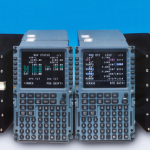Michael Porter, the Harvard Business School strategy guru says that strategies of the future will be led by companies that serve communities and understand the deep underlying needs of the communities that buy their products. Coined Creating Shared Value (CSV) by Michael Porter and Mark Kramer, requires a complete rethink of the fundamentals of how businesses operate. Three concepts support CSV (which is significantly different from CSR):
- Reconceiving products and services (so that they meet society needs and not just consumer or profit needs)
- Redesigning the value chain
- Building supportive industry clusters at the company’s locations
You can watch an interview with Michael Porter where he describes how businesses can Create Shared Value
This is a fascinating period for capitalisation – Companies that will succeed in the future will reinvent how we reconfigure value chains, transform how we deal with suppliers and redesign products that have benefits that go way beyind what people can imagine. By doing so they will unleash a new level of productivity, growth and profitability for society at large.
Companies that are implementing Shared Value concepts include Google, Nestle, J&J, Molson Coors Brewing, IBM, GE, and Wal-Mart.
Nestle having one of the most advanced and successful CSV businesses You can read more about Nestle’s CSV initiatives and strategies here
Another company that is benefiting substancially from CSV is GE. By reconfigurating products so that they deliver shared value, Sales of GE’s Ecomagination products reached $18 billion in 2009—the size of a Fortune 150 company. GE now predicts that revenues of Ecomagination products will grow at twice the rate of total company revenues over the next five years.Here are some examples of products that GE has Reconceived (more examples are available here)
GE’s TrueCourse™ Flight Management System is a hardware and software avionics system that allows aircraft to fly a more direct path when landing.
While traditional aircraft land with a “stair-step” approach of flat line segments, an optimized course keeps the plane at a higher “cruise” altitude longer (burning fuel more efficiently) and then lands it on a shorter, curved path (saving fuel by cutting engine time). It also may help reduce delays for passengers, and lower emissions and noise.
If a typical fleet of twenty-nine 737NG aircraft could fly GE’s Flight Management System TrueCourse™ 50 percent of the time, this would reduce annual fuel consumption by over 600,000 gallons based on a representative study, saving over $1.2 million per year at an average jet fuel price of $2.00/gallon.
GE’s RailEdge® Movement Planner is a breakthrough software solution that improves railroad capacity and reliability on the existing rail infrastructure.
Movement Planner helps railroads move more freight faster. Efficiency is gained at a fleet-wide level across an entire railroad network by analyzing train schedules, traffic control systems and train movements relative to each other and then coming up with an optimized traffic plan for the trains, even down to the best speed at which to travel to keep the flow going throughout the railroad. Average speeds increase by 10 to 20 percent, or up to four miles per hour — which is substantial since every mile per hour faster a freight train travels may save a railroad up to $200 million a year in capital and expenses.




